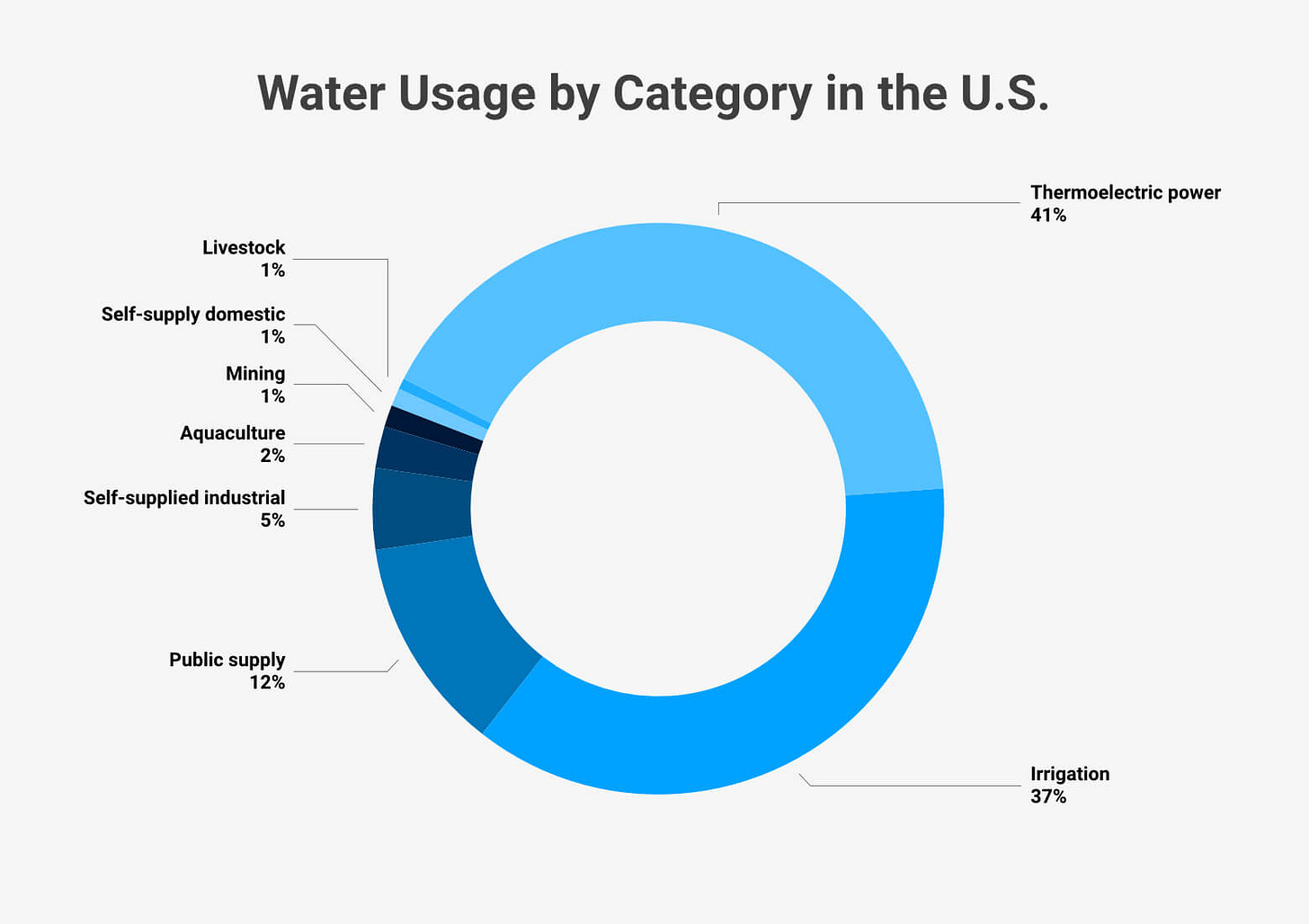"Water is the most important raw material in the industrial process. It’s the only thing that we can’t do without."
– James C. Sweeney, Professor of Energy Economics at Stanford University
In the 1980s, Las Vegas faced an immense challenge—how to supply water to a rapidly growing population and booming tourism economy. A controversial pipeline project from Eastern Nevada was the answer, tapping into stressed groundwater resources. This solution worked for a time, but as demand on these water sources grew, the vulnerabilities became clear. Today, a similar scenario is unfolding globally, but this time it’s artificial intelligence (AI) that’s driving the demand for resources, particularly electricity and water.
Today, a similar challenge is emerging, but this time it’s not just about keeping a city running—it’s about ensuring the survival of entire industries. Artificial Intelligence (AI) is transforming economies around the world, and while much of the focus has been on its energy consumption, the true bottleneck could be water. This precious resource, often overlooked in discussions about AI’s future, is just as critical. The cooling of data centers and power plants that fuel them consumes vast amounts of water—and it's running out.
As the U.S. braces for massive investments in AI infrastructure, a disturbing realization is dawning: securing not only enough electricity but also a reliable supply of water is becoming the next great challenge. Public officials, utility companies, and grid operators are all scrambling to address the pressures AI will place not just on the national power grid but on the water supply too. The water needed to cool data centers and generate the electricity to power them is rarely discussed, but it's about to become one of the most critical issues facing the country.
A recent S&P Global Market Intelligence report forecasts that U.S. data centers will consume over 280 terawatt-hours (TWh) of electricity in 2024. By 2028, that number is expected to nearly double, exceeding 530 TWh—more electricity than the entire state of Texas generated in 2022. The U.S. Department of Energy warns that by 2028, data centers could consume as much as 12% of all U.S. electricity, up from just 4.4% in 2023. This growth puts an incredible strain on an already overburdened power grid. But that's not the only issue: water is fast becoming just as scarce.
Data centers don’t just run on electricity. They need enormous amounts of water for cooling. A 1-gigawatt data center, which houses hundreds of thousands of servers, requires up to 200,000 barrels of water every single day. This is not just water to cool the servers themselves—it’s also needed to cool the power plants that generate the electricity used to run those data centers. A typical natural gas combined-cycle power plant—one of the most common types used to power data centers—requires around 114,000 barrels of water per day. Together, the combined water demand of the data center and its associated power plant can reach 300,000 barrels per day.
This demand for both electricity and water is already stretching the capacity of existing infrastructure. Thermoelectric power generation—such as the power plants used by data centers—is the largest consumer of water in the U.S., accounting for over 40% of daily water usage. For comparison, irrigation consumes just over 30%, and public water consumption is a mere 12%. Despite the huge amounts of water used by the power sector, data centers are often being built in areas where water is not easily accessible. Many of these locations are chosen for their lower real estate costs, but these places are frequently lacking in reliable water sources. Groundwater supplies, already depleted in some areas, are not sustainable for the long term.
Keep reading with a 7-day free trial
Subscribe to The Monetary Skeptic to keep reading this post and get 7 days of free access to the full post archives.






